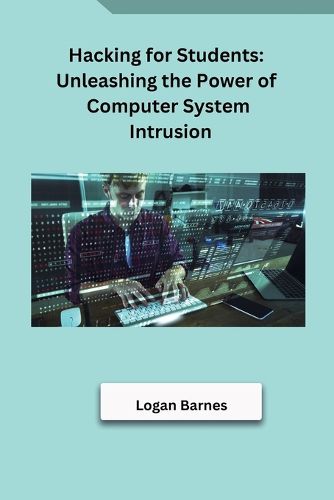Readings Newsletter
Become a Readings Member to make your shopping experience even easier.
Sign in or sign up for free!
You’re not far away from qualifying for FREE standard shipping within Australia
You’ve qualified for FREE standard shipping within Australia
The cart is loading…






Understanding the Basics of HackingIn today's digital age, it is crucial for students to be aware of the basics of hacking. Hacking, often portrayed in movies and media as a mysterious and illegal activity, is actually a broad term that encompasses various techniques used to gain unauthorized access to computer systems. While hacking can be used for both good and malicious purposes, it is important for students to understand the fundamentals to protect themselves and their digital assets.Firstly, it is essential to grasp the motivations behind hacking. Cyber criminals use technology to exploit vulnerabilities in computer systems to gain unauthorized access or steal sensitive information. Their motives can vary, ranging from financial gain, personal vendettas, or even political agendas. By understanding the motives behind hacking, students can better comprehend the potential threats they may face and take appropriate precautions to safeguard their devices and data.One of the most significant aspects of hacking is understanding common attack vectors. Cyber criminals exploit various techniques, such as phishing, social engineering, malware, and brute force attacks, to compromise computer systems. Phishing involves tricking individuals into revealing sensitive information through seemingly legitimate emails or websites. Social engineering exploits psychological and behavioral patterns to manipulate individuals into divulging confidential data. Malware, including viruses, worms, and Trojan horses, are malicious software programs that infect computers and allow hackers to gain unauthorized access. Brute force attacks involve repeatedly guessing passwords until the correct one is found.Students must also be aware of the importance of strong passwords and regularly updating them. Weak passwords are easily cracked by hackers using brute force techniques. By creating unique, complex, and lengthy passwords, students can significantly reduce the risk of unauthorized access to their accounts. Additionally, using multi-factor authentication adds an extra layer of security by requiring additional verification, such as a fingerprint or a generated code.Another crucial aspect of understanding hacking is the concept of ethical hacking or penetration testing. Ethical hackers, also known as white hat hackers, use their skills to identify vulnerabilities in computer systems and help organizations strengthen their security. By learning about ethical hacking, students can gain valuable insights into the mindset and techniques of hackers while also exploring potential career paths in cybersecurity.
$9.00 standard shipping within Australia
FREE standard shipping within Australia for orders over $100.00
Express & International shipping calculated at checkout
Understanding the Basics of HackingIn today's digital age, it is crucial for students to be aware of the basics of hacking. Hacking, often portrayed in movies and media as a mysterious and illegal activity, is actually a broad term that encompasses various techniques used to gain unauthorized access to computer systems. While hacking can be used for both good and malicious purposes, it is important for students to understand the fundamentals to protect themselves and their digital assets.Firstly, it is essential to grasp the motivations behind hacking. Cyber criminals use technology to exploit vulnerabilities in computer systems to gain unauthorized access or steal sensitive information. Their motives can vary, ranging from financial gain, personal vendettas, or even political agendas. By understanding the motives behind hacking, students can better comprehend the potential threats they may face and take appropriate precautions to safeguard their devices and data.One of the most significant aspects of hacking is understanding common attack vectors. Cyber criminals exploit various techniques, such as phishing, social engineering, malware, and brute force attacks, to compromise computer systems. Phishing involves tricking individuals into revealing sensitive information through seemingly legitimate emails or websites. Social engineering exploits psychological and behavioral patterns to manipulate individuals into divulging confidential data. Malware, including viruses, worms, and Trojan horses, are malicious software programs that infect computers and allow hackers to gain unauthorized access. Brute force attacks involve repeatedly guessing passwords until the correct one is found.Students must also be aware of the importance of strong passwords and regularly updating them. Weak passwords are easily cracked by hackers using brute force techniques. By creating unique, complex, and lengthy passwords, students can significantly reduce the risk of unauthorized access to their accounts. Additionally, using multi-factor authentication adds an extra layer of security by requiring additional verification, such as a fingerprint or a generated code.Another crucial aspect of understanding hacking is the concept of ethical hacking or penetration testing. Ethical hackers, also known as white hat hackers, use their skills to identify vulnerabilities in computer systems and help organizations strengthen their security. By learning about ethical hacking, students can gain valuable insights into the mindset and techniques of hackers while also exploring potential career paths in cybersecurity.